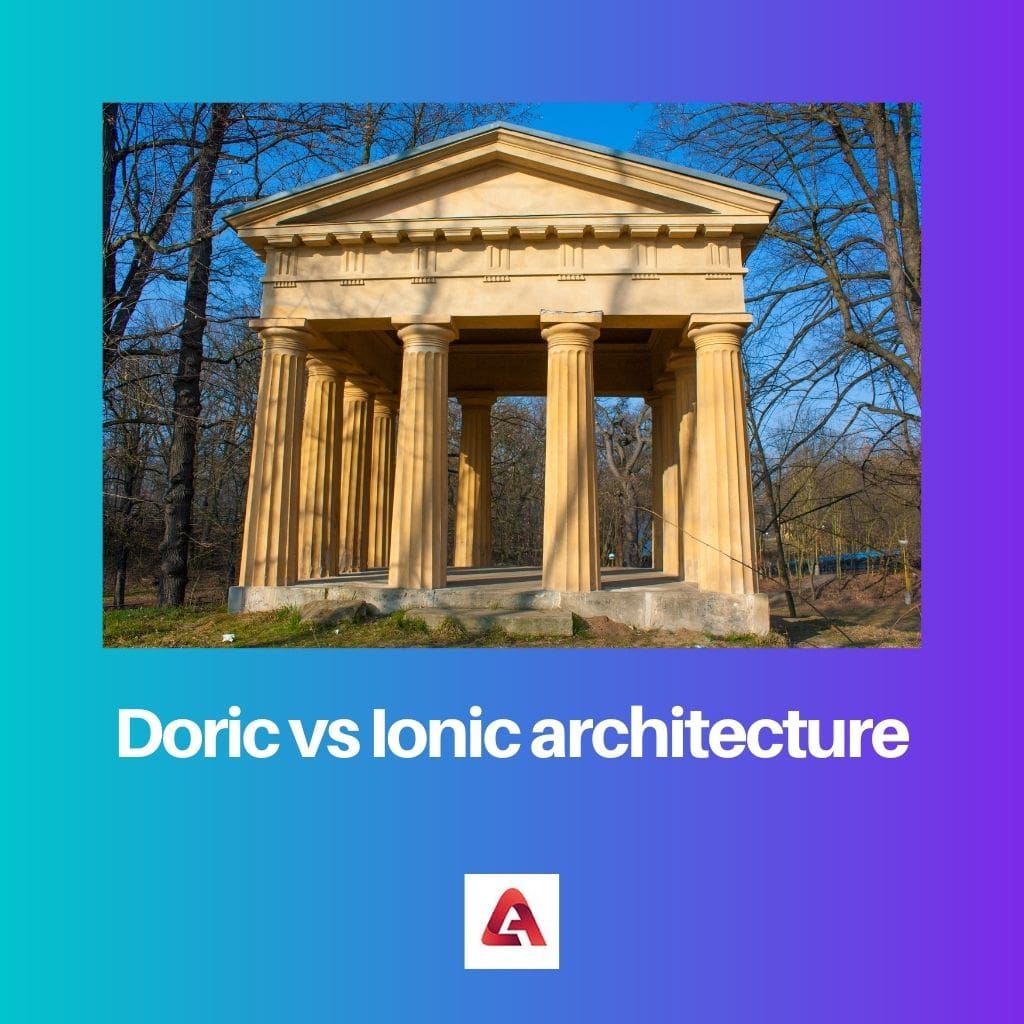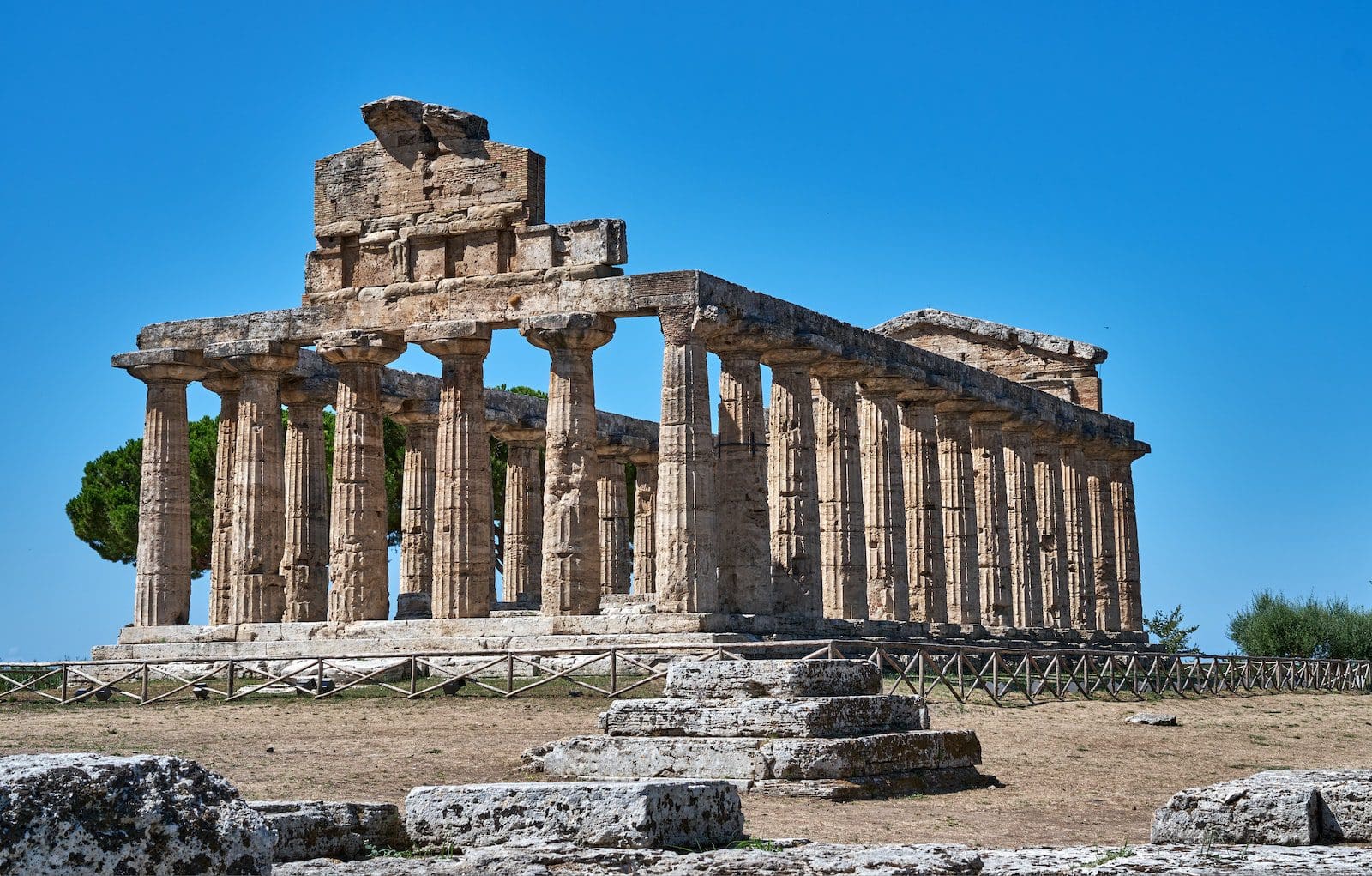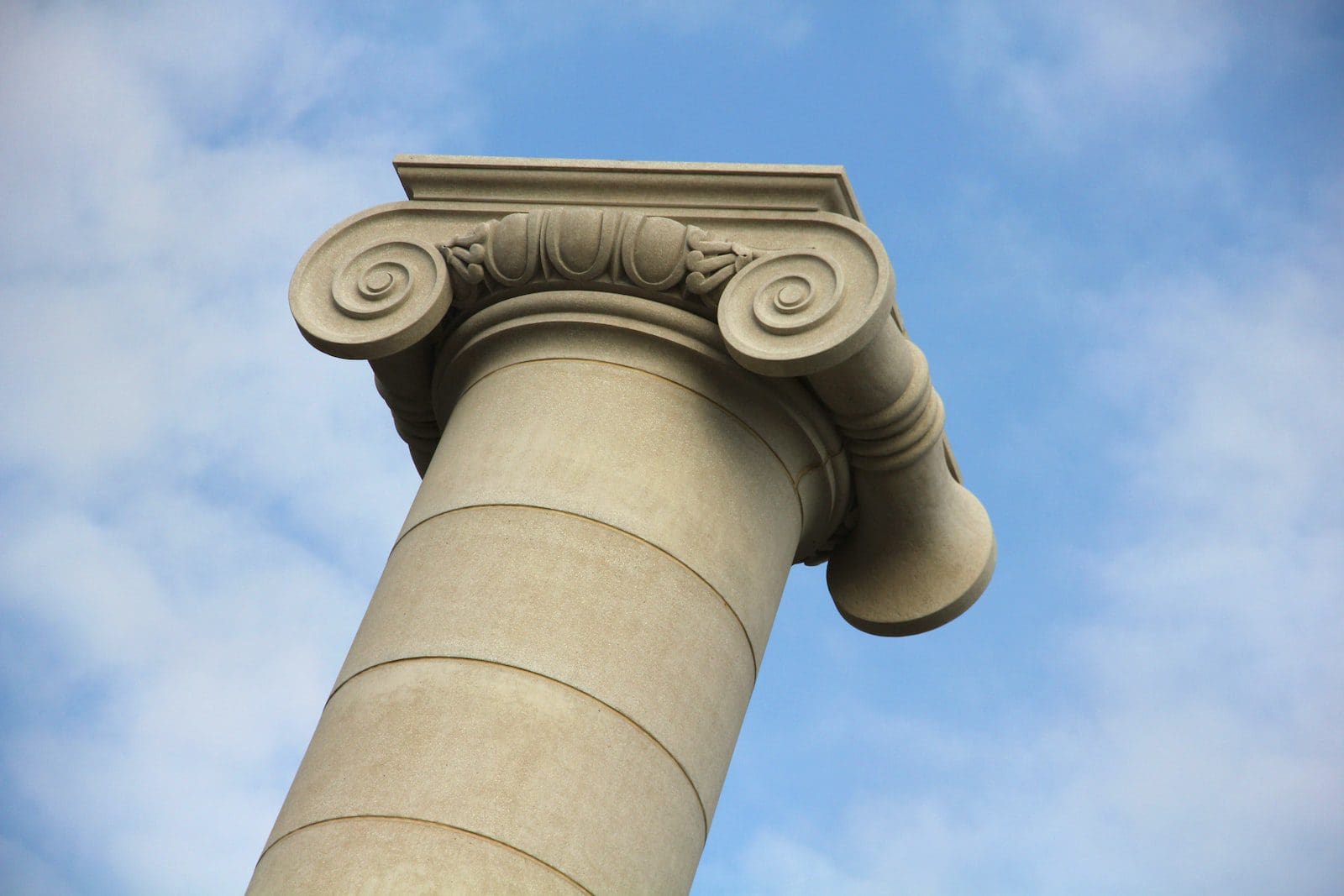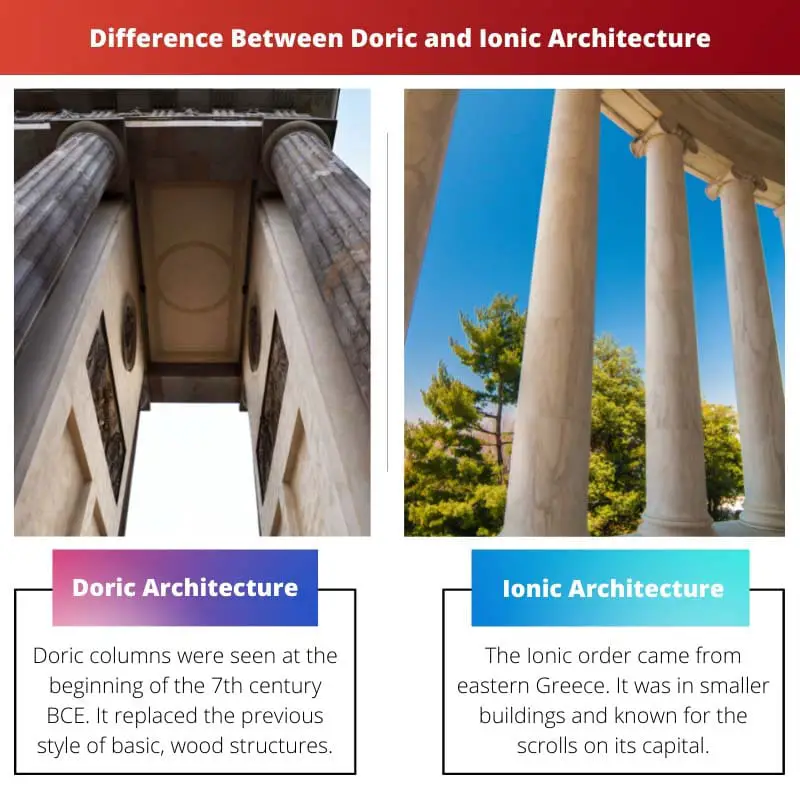Greek architecture is well known for its temples and is continued to be widely used in architecture even today. The architectural order describes the style of a building.
There are three major classical orders in Greek architecture, namely, Doric, Ionic, and Corinthian.
The Doric order is the most primitive and the simplest of the three orders. The Ionic order is the next order which developed in the Ionian Islands.
Key Takeaways
- Doric and Ionic are two of the three classical orders of ancient Greek architecture, known for their distinctive column designs; Doric columns are plain, sturdy, and fluted, while Ionic columns are taller, slimmer, and feature spiral-shaped volutes.
- Doric architecture is associated with simplicity, strength, and ruggedness, while Ionic architecture is known for its elegance, refinement, and sophistication.
- Doric columns have no base, while Ionic columns feature a pedestal-like base; Doric friezes are decorated with simple triglyphs and metopes, while Ionic friezes feature more intricate carvings and ornamentation.
Doric vs. Ionic Architecture
The difference between Doric and Ionic architecture is that Doric columns are huge and stocky, whereas Ionic columns are more slender and tall.

Comparison Table
| Parameters of Comparison | Doric | Ionic |
|---|---|---|
| Origin | Western Doric Region of Greece | Ionian Islands |
| Style | Massive and Stocky | Slender and Taller |
| Height | 7 diameters high | 8 diameters high |
| Base | No base | Has base |
| Capitals | Consists of a round bottom and a square top | It is elaborate with volutes or scrolls with a carved egg and dart on its curved section. |
| Examples | The Parthenon, The Temple of Hephaestus | The Heraion of Samos, The Temple of Artemis at Ephesus |
What is the Doric Column?
Doric columns were seen at the beginning of the 7th century BCE. It replaced the previous style of basic wood structures.
It was used in Greece until about 100 BC. It is the oldest order, simplest, and most massive.
The Doric columns have no base. These columns were built to support the weight of the ceiling.
The columns are short, stout, and heavy. Their height is only four to eight times the diameter of the column.
The column shaft is fluted with 20 flutes, while the capital is simple and flared. The capital is made of two elements, a circular bottom called the echinus that is topped by a square called the abacus.
The capital of a column directly supports the load of the ceiling.
The Doric entablature is divided into three horizontal registers. The lower part is smooth or divided by horizontal lines.
The frieze comes with simple patterns with vertical channels called triglyphs and metopes (square spaces for either painted or sculpted decoration) in between. The metopes are plain or sometimes decorated with Greek gods and heroes statues.
All surviving temples of Ancient Greece and some of the most important contemporary Greek buildings are built in this order, like that of the Parthenon on the Athens Acropolis and the Temple of Zeus at Olympia.
Doric architecture is of two types, Greek and Roman. A Roman Doric column is similar to that of a Greek, but with two exceptions:
- They mostly have a base on the bottom of the shaft.
- These columns are taller than their Greek counterparts, even if the shaft diameters are the same.
Roman forms of the order of the Doric column appear lighter and more graceful than Greek columns.

What is the Ionic Column?
The Ionic order came from eastern Greece. It was in smaller buildings and is well known for the scrolls in its capital called volutes.
A column of the Ionic order is nine-fold its lower diameter. The shaft is eight diameters high.
The Ionic order is known for its graceful proportions.
These columns are considered to be the tallest and thinnest. The column includes the slender, fluted pillars with an outsized base and two opposed volutes in the capital.
The Ionic shaft has 24 flutes. The Temple of Athena, located near the entrance to the Athens’ Acropolis, is an example of the Ionic order.
The Ionic entablature consists of the architrave, the frieze, and the cornice. The architrave is a long beam that supports the weight directly above the column.
The frieze is a strip above the architrave. Cornice refers to the top weight-bearing part, which juts outwards.
Pytheos and Hermogenes are some of the few famous Ionic Architects. In the Ionic order, Pytheos built the Temple of Athena Polias and the Mausoleum at Halikarnassos.
The Temple of Artemis in Magnesia and the Temple of Dionysos in the Ionian city of Teos were built by Hermogenes. The Temple of Hera on Samos is a famous Ionic temple.

Main Differences Between Doric and Ionic Columns
- The Doric order was born in the 5th century in Peloponnese, in the western region of Greece, while the Ionic comes from Ionia, a coastal region in the early 6th century B.C.
- Doric is the simplest and oldest of the three Greek architectural orders, while the Ionic is the second order later developed.
- Doric columns are huge and stocky, while the Ionic columns are slender and taller.
- Doric columns don’t have a base, while Ionic columns have one.
- The capital of the Doric order is simple. It consists of a round bottom and a square top, while the capital of the Ionic order, which is more elaborate, consists of volutes or scrolls with a carved egg and dart on their curved section.
- Ionic columns have more flutes when compared to those Doric columns.
- The height of the entire Doric column is only about four to eight lower diameters. In contrast, the height of the Ionic order including that of the column, base, capital, and entablature— is nine lower diameters.
- The Doric shaft is channeled with 20 shallow flutes, while the Ionic shaft, which is eight lower diameters high, has 24 flutes.

- https://www.cambridge.org/in/academic/subjects/classical-studies/classical-art-and-architecture/origins-greek-architectural-orders?format=PB&isbn=9780521124225
- https://onlinelibrary.wiley.com/doi/abs/10.1002/9781118373057.ch39
- https://www.jstor.org/stable/10.3764/aja.115.4.0611#metadata_info_tab_contents



